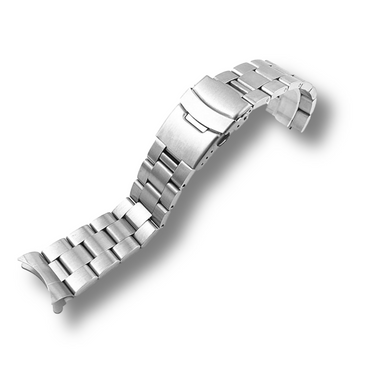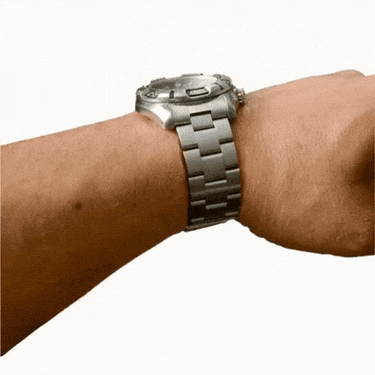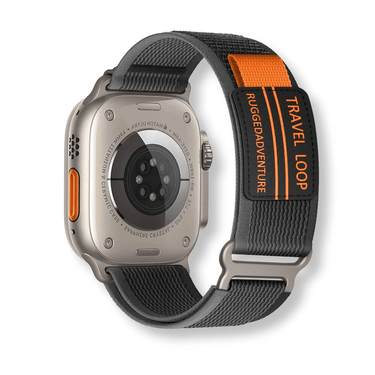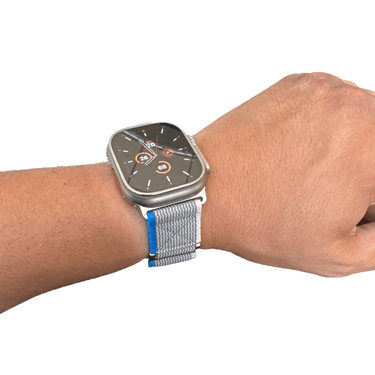The Ultimate Guide to Choosing the Perfect Watchband for Your Antique Timepiece
Introduction: The Importance of a Perfect Watchband
Antique timepieces are a rare and precious commodity, often passed down through generations as heirlooms. The intricate details and unique craftsmanship of these watches make them stand out from modern designs.
However, one crucial aspect that can make or break the aesthetic appeal and functionality of these treasures is the watchband. A watchband is more than just a functional accessory; it is an essential element that can elevate your antique timepiece's value and beauty.
A perfect watchband can bring out the character, history, and elegance of your antique timepiece while providing comfort and reliability. Conversely, a poorly chosen watchband could detract from its timeless appeal, compromise its durability or even cause damage.
Therefore, as an antique timepiece owner, it is crucial to understand how to choose the perfect watchband for your precious investment. In this ultimate guide, we will explore everything you need to know about selecting the right watchband for your antique timepiece.
Understanding Your Antique Timepiece
Before delving into the world of watchbands for antique timepieces, it's essential first to understand what type of antique timepiece you own. There are different types of vintage watches with unique characteristics that require specific types of bands.
For instance, pocket watches are designed differently from wristwatches and require specialized bands. Similarly, there are manual winding watches with small lugs that require thin straps versus automatic watches with larger lugs requiring wider straps.
It's also important to note that some antique pieces may have historic or sentimental value attached to specific bands they came with originally which may be harder to find than other types of replacement bands. Therefore before choosing any band carefully consider what type would be best suited for your particular watch based on its features.
Types of Watchbands
There are different types of watchbands available, each with its own unique set of features, advantages and disadvantages to consider. Leather bands are classic and timeless. They come in various colors, textures and styles to suit your watch's design and personal style.
However, they can be prone to wear and tear over time. Metal bands are durable and often used in sports watches due to their water resistance properties.
They come in stainless steel, gold or silver variations but can be heavyweight or uncomfortable for all-day wearings. NATO straps have become increasingly popular among collectors due to their versatility, durability, easy interchangeable feature and affordability without compromising on style.
They come in a wide variety of colors and patterns but may not be suitable for formal occasions where a more sophisticated look is required. Other unique materials such as alligator or ostrich skin can provide an exotic look that complements your antique timepiece's rarity but may not be practical for everyday use due to the high cost.
Factors to Consider When Choosing a Watchband
When selecting the perfect watchband for your antique timepiece there are important factors you need to keep in mind such as comfortability, style, durability etc. Comfortability: A good watchband should fit comfortably on your wrist without causing any irritation or discomfort even if worn throughout the day. It should also not create any pressure points that could affect circulation leading to itchiness or soreness around the area it sits on your skin.
Style: A perfect watchband should match the design elements of your antique timepiece while reflecting your personal style preference seamlessly. The right band can bring out details of your vintage piece like color tones or intricate dial designs enhancing its overall appeal while creating a statement piece when it comes together with other accessories you wear.
Durability: The chosen band needs to withstand daily use without compromising its quality over time. You don't want your band to wear out too quickly, break or discolour with prolonged use.
Conclusion: Choosing the perfect watchband is an essential aspect of owning an antique timepiece.
It can significantly enhance its aesthetic appeal while providing comfort and reliability. By understanding your antique timepiece's unique features and considering factors such as comfortability, style, and durability you can select the right band that complements its historical value while reflecting your personal style preference.
Understanding Your Antique Timepiece
The Different Types of Antique Timepieces and Their Unique Features
Antique timepieces come in various types, each with its unique features that distinguish it from the others. The most common antique timepieces include the pocket watch, wristwatch, and pendant watch. Each of these antique timepieces reflects the fashion of a particular era and has its unique characteristics that make it special.
Pocket watches were popular from the 16th to the mid-20th century before they were replaced by wristwatches. They are often larger than other timepieces, making them more conspicuous when worn with a chain or fastened to clothing.
Wristwatches became popular during World War I for their practicality in military use. They are usually smaller than pocket watches and worn around the wrist.
Pendant watches are also known as "ladies' watches" due to their small size and delicate appearance. They often have ornate designs and were intended primarily as jewelry pieces rather than functional timekeeping devices.
How These Features Can Affect Your Choice of Watchband
The features of your antique timepiece can significantly impact your choice of watchband. For instance, if you own a pocket watch, you might opt for a chain or leather band that matches its style and period origin. On the other hand, if you have a wristwatch or pendant watch, your choice is more varied due to their smaller sizes.
When choosing a watchband for your antique timepiece, consider its color, material texture and design elements such as engravings or embellishments carefully. If your antique clock is highly decorative with intricate patterns on its face or casing, opt for a subtle band that won't distract from these details.
Provide Tips on How to Identify the Specific Type of Antique Timepiece You Own
Identifying an antique timepiece requires time, research, and a keen eye for detail. The first step is to look for any markings or logos on the clock's face or case that indicate the manufacturer or year of production.
Once you have this information, you can research online or consult an expert to determine its type and year of manufacture. Another way to identify your antique timepiece is by examining its design.
Pocket watches from the 18th and 19th centuries often feature intricate designs and engravings, while early wristwatches are more simplistic in their design with clean lines and simple markings. Understanding your antique timepiece is essential when choosing a watchband.
The different types of antique timepieces have unique features that impact the choice of watchband. When identifying your type of antique clock, it is crucial to look out for markings such as logos or consult an expert if needed.
Types of Watchbands
Leather Bands
Leather watchbands are a classic choice for antique timepieces. There are different types of leather bands available, including genuine leather, faux leather, and exotic leathers such as alligator or ostrich skin.
Genuine leather is the most popular choice due to its durability and affordability. However, it may not be as high-quality as exotic leathers.
Faux leather is a cheaper alternative to genuine leather but lacks the same quality and feel. Exotic leathers such as alligator and ostrich skin provide a unique aesthetic but come at a higher cost.
One of the advantages of choosing a leather watchband is its ability to complement any outfit or occasion. Leather bands also naturally patina over time, providing a vintage look that complements antique timepieces well.
However, one downside to leather bands is their susceptibility to wear and tear over time. They may also be less breathable compared to other materials such as metal or NATO straps.
Metal Bands
Metal watchbands offer durability and longevity compared to other materials. Stainless steel is the most popular option due to its affordability and resistance to rusting or tarnishing. Gold and silver bands provide an elegant aesthetic but come at a higher cost.
One advantage of metal bands is their easy adjustability with removable links or clasps. They can also provide better ventilation than other materials such as leather.
However, metal bands may not be suitable for those with sensitive skin due to potential allergic reactions from certain metals. Additionally, they may not complement every outfit or occasion since they have a more formal appearance than other materials.
NATO Straps
NATO straps are made from nylon webbing material that wraps around both sides of the wristband with one long piece looping through both spring bars on either side of the watch face. These straps were originally designed for military use due to their durability and comfort.
Nowadays, NATO straps have become popular among collectors due to their versatility and affordability. They come in a wide range of colors and patterns, providing the perfect opportunity for watch owners to express their personality through their wristwear.
One benefit of NATO straps is that they are easy to replace and can be swapped out quickly depending on the occasion or outfit. They are also water-resistant and offer good ventilation.
However, NATO straps may not be suitable for those who prefer a more formal appearance with their antique timepiece. They also may not provide as much durability as other materials such as metal or leather.
Other Unique Materials
In addition to leather, metal, and NATO straps, there are many other unique materials that can be used for watchbands. Alligator skin provides a high-quality aesthetic but comes at a higher cost.
Ostrich skin offers a unique pattern but may not provide the same longevity as other materials. Other materials such as canvas or rubber offer unique appearances and textures that complement specific styles of antique timepieces well.
When choosing a unique material for your watchband, it's important to consider both the aesthetic appeal as well as durability over time. While certain materials may look great initially, they may wear down quickly compared to more traditional options such as leather or metal.
Overall, there are many options available when it comes to choosing the perfect watchband for your antique timepiece. Consider factors such as comfortability, style, and material durability before making your final decision.
Factors to Consider When Choosing a Watchband
Comfortability: Why It Matters
When it comes to choosing the perfect watchband for your antique timepiece, comfort is king. Sure, you may be tempted to go for that stylish alligator skin strap or shiny metal band, but if it's not comfortable on your wrist, what's the point? Remember, you're going to be wearing this watch day in and day out, so make sure you choose a band that won't leave your wrist sore and irritated.
But don't just take my word for it. Listen to the experts - watch collectors and enthusiasts alike.
They'll tell you that comfort should be one of your top priorities when selecting a watchband. Trust me; you'll thank them (and me) later.
Style: The Icing on the Cake
Now, onto the fun part - style! Choosing a watchband that complements your antique timepiece is like putting the cherry on top of an already delicious sundae.
It's all about finding the right balance between form and function. When it comes to style, there are no hard and fast rules - it ultimately comes down to personal preference.
Some collectors prefer classic leather straps that complement their vintage watches' timeless aesthetic. Others might opt for more contemporary NATO straps that add a pop of color or pattern to their timepiece.
The key here is not to get too caught up in trends or what others think looks good. Choose something that speaks to your unique sense of style and personality - after all, your antique timepiece is an extension of YOU.
Conclusion
Choosing the perfect watchband for your antique timepiece requires careful consideration of both comfort and style. Don't be swayed by passing fads or what others think looks good - ultimately, you need to choose something that feels right for you.
Remember, your antique timepiece is a reflection of your personality and sense of style. A carefully chosen watchband can elevate it to new heights and make it truly one-of-a-kind.
So take the time to explore different materials, colors, and styles - who knows, you might just discover a new favorite watchband that will elevate your vintage timepiece to the next level. Happy hunting!

























